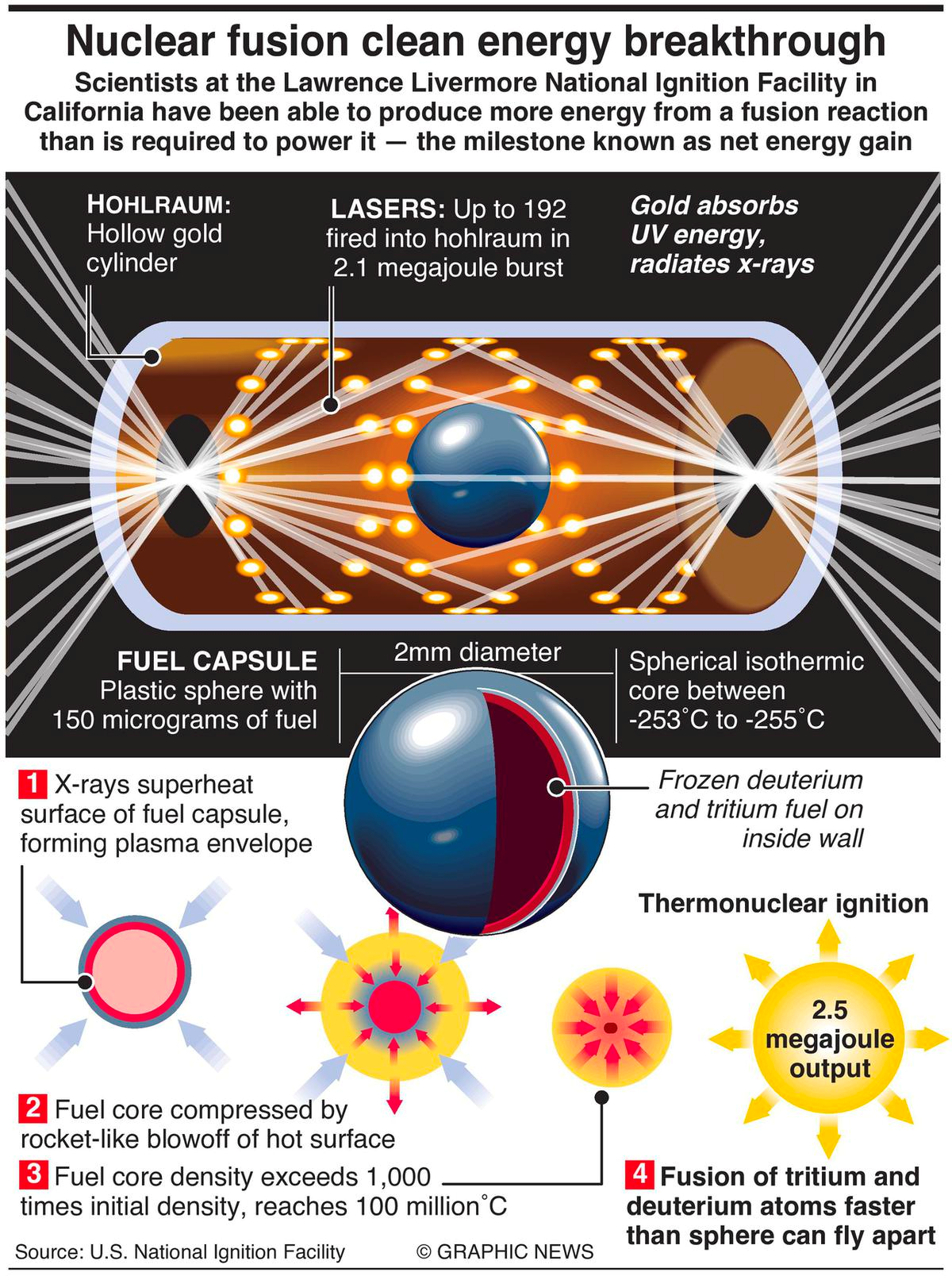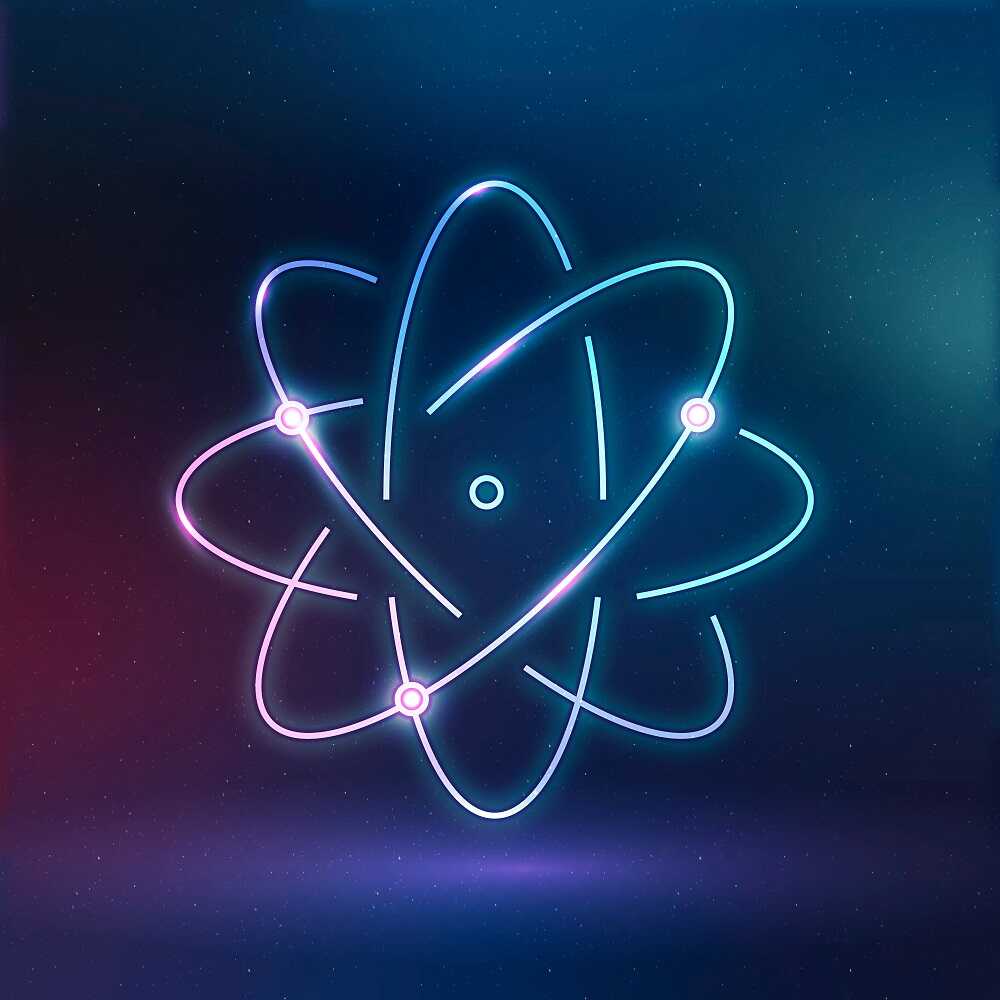Humanity did it!
US researchers, for the first time, have replicated a nuclear fusion reaction found only in the stars and the sun.
Kim Budil and her team of 8,000 engineers, physicists, chemists, and materials scientists at the Lawrence Livermore National Laboratory (LLNL) facility in the US state of California successfully used lasers to create the star-like conditions of fusion ignition in a lab. The ignition resulted in a net energy gain for the first time, meaning the fusion reaction produced more energy than it consumed – a net gain of 1.5 megajoules.
In a statement, the US Department of Energy hailed the breakthrough as a “historic, first-of-its-kind achievement” that will provide “invaluable insights into the prospects of clean fusion energy.”
Scientists have been working for decades to develop nuclear fusion – touted by its supporters as a clean, abundant, and safe source of energy that could eventually allow humanity to break its dependence on fossil fuels driving a global climate crisis.
Fusion ignition is “one of the most impressive scientific feats of the 21st century,″ Energy Secretary Jennifer Granholm said, adding that the breakthrough “will go down in the history books.”
What is nuclear fusion?
Nuclear fusion is the reaction that happens when two light nuclei merge to form a single heavier nucleus. Since the total mass of that single nucleus is less than the mass of the two original nuclei, the leftover mass is energy that is released in the process.
Scientists have long understood how nuclear fusion has worked and have been trying to duplicate the process on Earth as far back as the 1930s. Current efforts focus on fusing a pair of hydrogen isotopes: deuterium and tritium.
How does it work at LLNL?
LLNL has the world’s most energetic laser. The footprint of the laser facility is about the size of three American football fields and about ten stories tall. The laser produces about two megajoules of laser energy that goes to the target. The energy is concentrated down to a small volume to get to extremely high temperatures and densities.
192 laser beams are focussed on a small gold can to generate an X-ray bath. They bathe a tiny capsule in the center filled with hydrogen fuel. As the outer surface of the capsule made out of diamond blows off, the inner surface moves in, compressing the hydrogen fuel. If it is compressed fast enough and held together long enough, the fusion reaction becomes self-sustaining.
The experiment produced three megajoules of fusion energy for laser energy input of two megajoules, resulting in a net gain. That is the first time in a laboratory that anyone has produced more fusion gain than the energy put into the capsule. It takes about 300-ish megajoules off the grid to run the laser.
The facility was not built to be a power plant; it was built to be a scientific facility. The demonstration of the self-sustaining fusion reaction is a big deal and demonstrates for the first time the fundamental building block of what a fusion energy system could look like.

Working of inertial confinement fusion works, nuclear clean energy. Image Credit: Graphic News Collective LLP
What’s next?
Kim said, “It cost about $3.5 billion to build the facility and we spend about $350 million a year running it. It was a leading-edge, high-risk project when we began to build the laser. Seven of the 10 critical technologies did not exist, they had to be created along the way. This is what public-sector investment is good at, large-scale, able to manage risk over time, and bring resources to bear at the laboratory from a wide range of disciplines.
“Our laser was not built for energy generation, it was built as a backbone of a national security program. If we want to take this forward, public-private partnerships will be essential. If I look at the private-sector fusion companies that have already been spun out, they have needs for expertise and certain specific skills that would be cost-prohibitive to develop within a start-up framework. So they can partner with the laboratories to get access to that capability and expertise. In the inertial confinement fusion space, it’s essential.
“We have worked hard and diligently over 60 years. [Back then] lasers had just been invented, it was not a well-known technology like it is today. The public-sector money for inertial fusion energy is small and the Department of Energy is building that program. Our hope is that with the great announcement, this important building block will be able to increase support for the program and bring many more players to bear. This is a very challenging technology path. It is plausible but we need the best people working on this and lots of ideas going forward.”
Sources:


